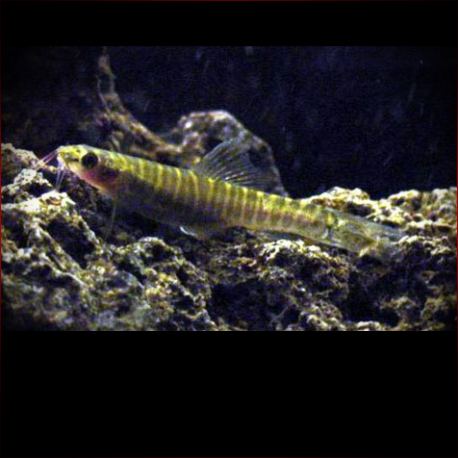More info
Datasheet
| Minimum Tank Size | 60 litres / 15.85 US gallons |
| Maximum Size | 5.0cm / 1.97inches |
| Temperature | 23°C / 73.40°F - 26°C / 78.80°F |
| Hardness | 1.01dgH / 18ppm - 10.03dgH / 179ppm |
| pH | 4.5-7.0 |
Aquarium Setup
Not difficult to maintain under the correct conditions; it is strongly recommended to keep Nemacheilus Saravacensis in a tank designed to resemble a flowing stream or river with a substrate of variably-sized rocks, sand, fine gravel, and some water-worn boulders. The tank can be further furnished with driftwood branches arranged to form a network of nooks, crannies, and shaded spots, providing broken lines of sight. While most aquatic plants may fail to thrive in such surroundings, hardy types such as Microsorum, Bolbitis, or Anubias species can be grown attached to the décor. It is best to have a high proportion of dissolved oxygen and some water movement in the tank. Utilizing power filter(s), additional powerhead(s), or airstone(s) is recommended. Nemacheilus Saravacensis, like many fishes naturally inhabiting running water, is intolerant to the accumulation of organic pollutants and requires spotless water to thrive. Routine weekly water changes of 30-50% tank volume should be considered.
Behaviour
Nemacheilus Saravacensis is peaceful with conspecifics and seems to appreciate being maintained in a group, making it ideal to purchase four or more specimens. When selecting tankmates, peaceful, open water-dwelling cyprinids are suggested as they can boost the confidence of this naturally reclusive loach. Rheophilic loaches from genera such as Gastromyzon, Pseudogastromyzon, Beaufortia, and Sewellia, as well as benthic cyprinids like Crossocheilus and Garra species, are also compatible options. While some similarly-shaped relatives may be excessively territorial or aggressive, a combination could work in larger aquarium setups.
Feeding and Diet
Nemacheilus Saravacensis is omnivorous, with its diet mainly consisting of small insects, worms, crustaceans, and other zooplankton. While they will accept dried foods of a suitable size, feeding them exclusively these is not recommended. Offering daily meals of small live and frozen fare such as Daphnia, Artemia, and bloodworm will result in optimal coloration and condition.
Reproduction & Dimorphism
Information on the reproduction of Nemacheilus Saravacensis is unrecorded. Mature males of this species possess a suborbital flap, rows of tubercules on the dorsal surface of the pectoral fins, and tuberculation on the caudal peduncle. Adult females are likely to be slightly larger and heavier-bodied than males.
Habitat and Distribution
Native to the island of Borneo, Nemacheilus Saravacensis has been recorded from various drainages in the Malaysian state of Sarawak and neighboring Indonesian province Kalimantan Barat. The species is found in clear, tea-colored forest streams with dense marginal vegetation, sandy substrates, small rocks, and pebbles. It is also known to inhabit environments with sandy substrate and organic debris such as submerged roots, branches, and leaf litter. Sympatric species in their habitat include 'Puntius’ kuchingensis, Trigonopoma pauciperforatum, Betta lehi, Acanthopsoides, and Pangio species.

